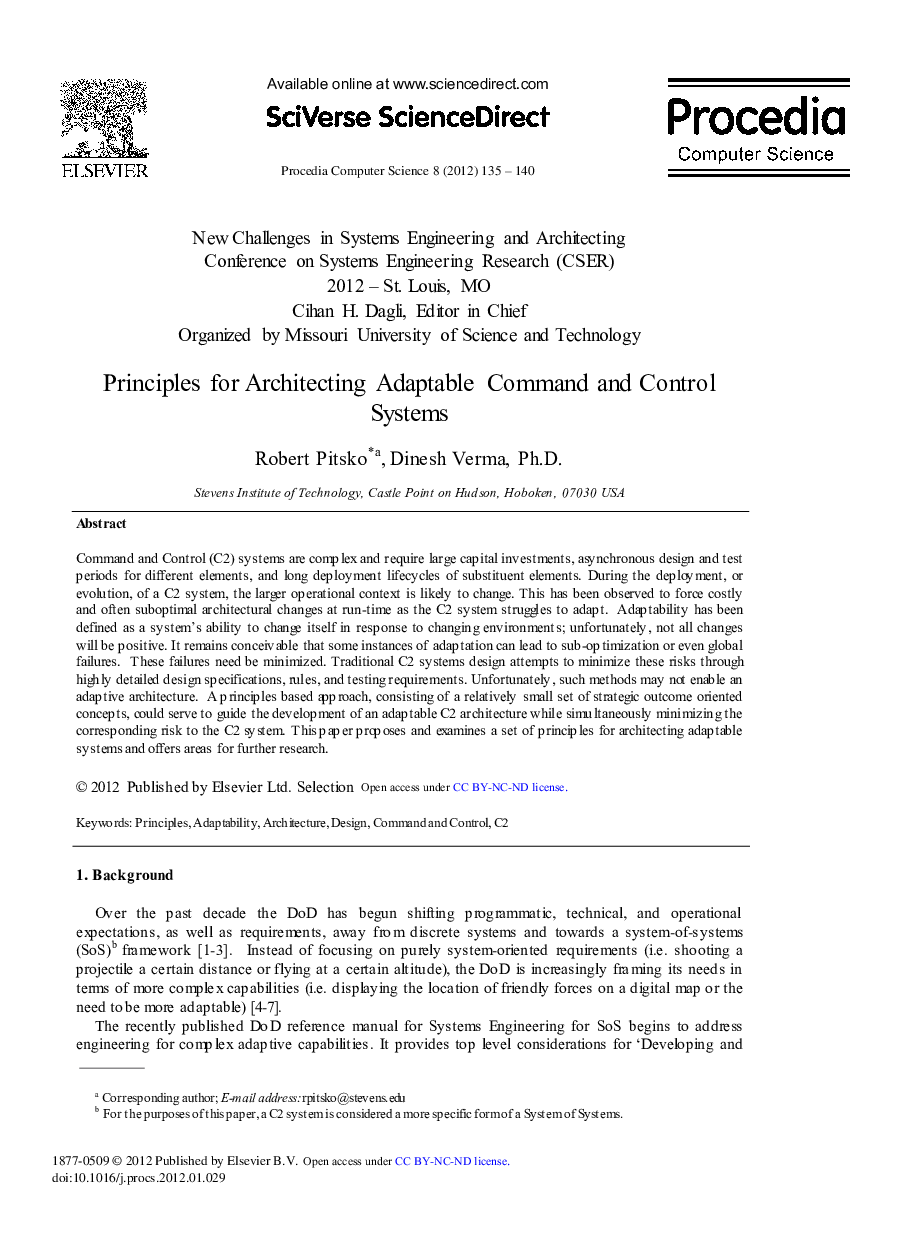| Article ID | Journal | Published Year | Pages | File Type |
|---|---|---|---|---|
| 488072 | Procedia Computer Science | 2012 | 6 Pages |
Command and Control (C2) systems are complex and require large capital investments, asynchronous design and test periods for different elements, and long deployment lifecycles of substituent elements. During the deployment, or evolution, of a C2 system, the larger operational context is likely to change. This has been observed to force costly and often suboptimal architectural changes at run-time as the C2 system struggles to adapt. Adaptability has been defined as a sy stem's ability to change itself in resp onse to changin g env ironment s; unfortunately, not all changes will be positive. It remains conceivable that some instances of adaptation can lead to sub-optimization or even global failures. These failures need be minimized. Traditional C2 systems design attempts to minimize these risks through highly detailed design specifications, rules, and testing requirements. Unfortunately, such methods may not enable an adaptive architecture. A principles based approach, consisting of a relatively small set of strategic outcome oriented concepts, could serve to guide the development of an adaptable C2 architecture while simultaneously minimizing the corresponding risk to the C2 system. This paper proposes and examines a set of principles for architecting adaptable systems and offers areas for further research.
